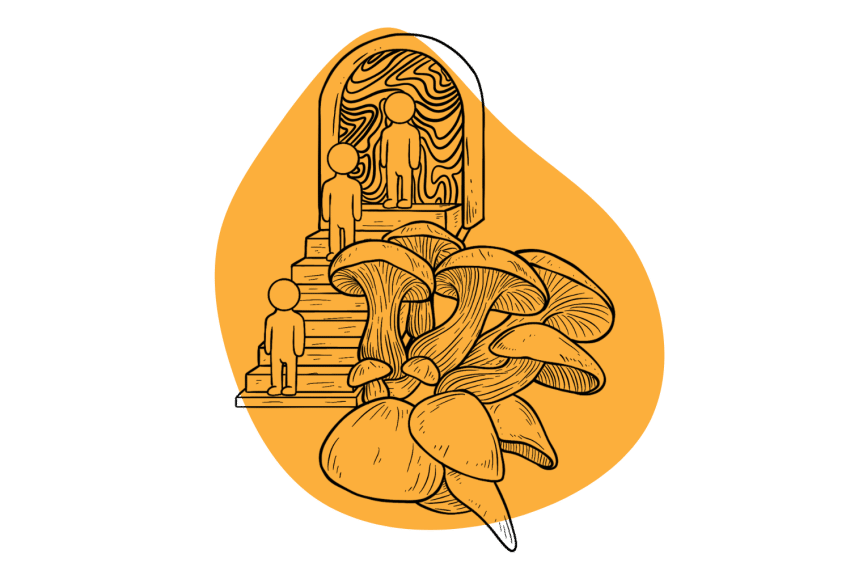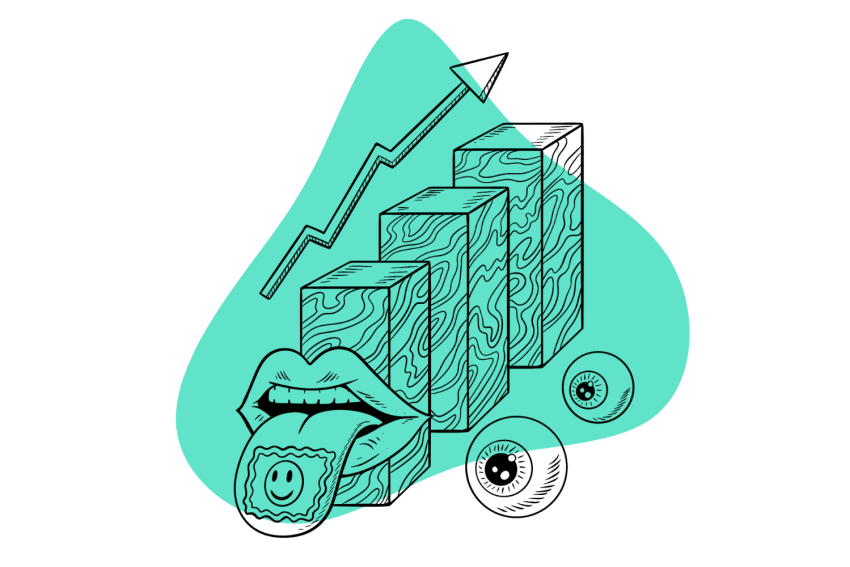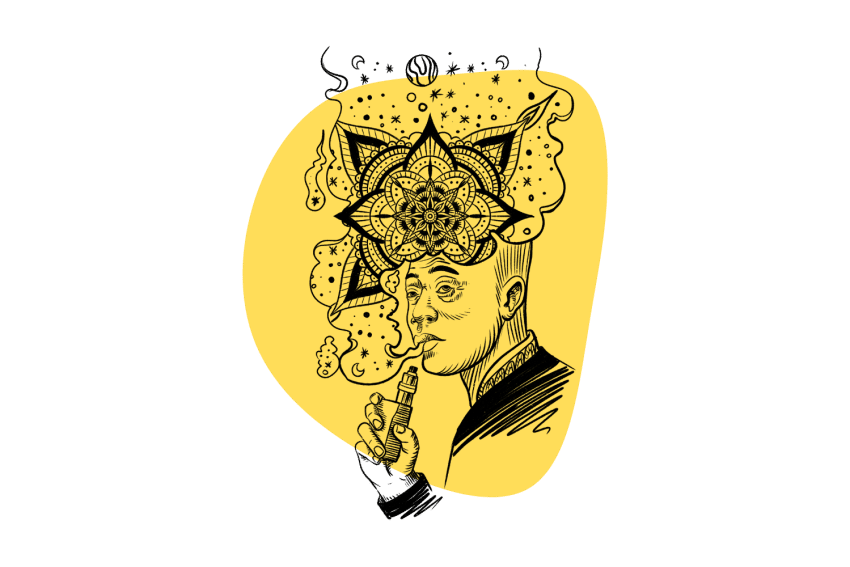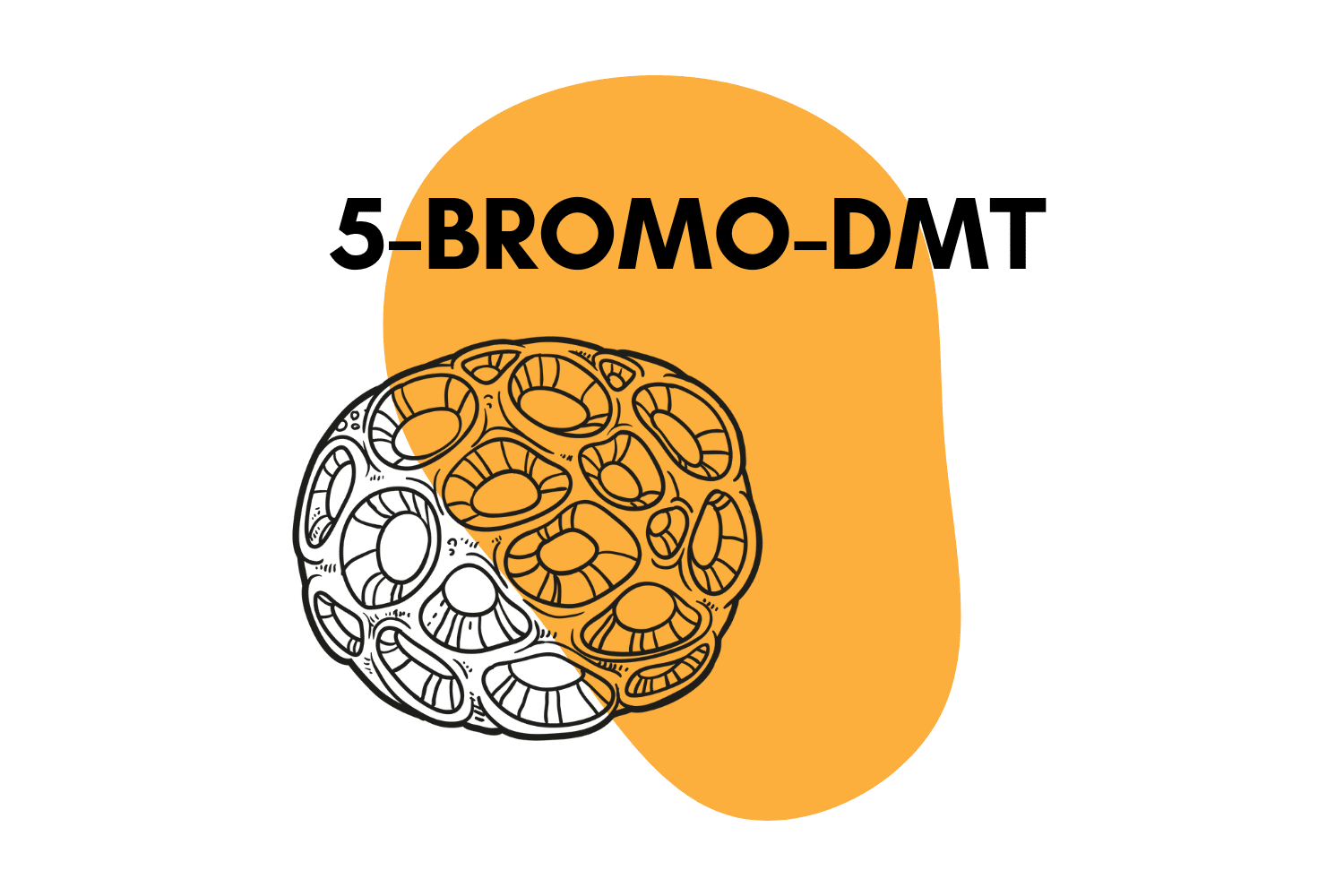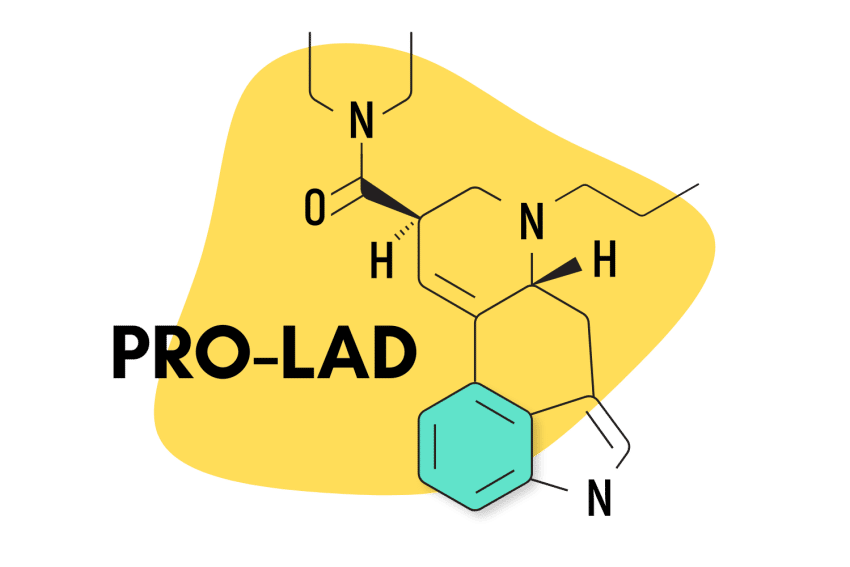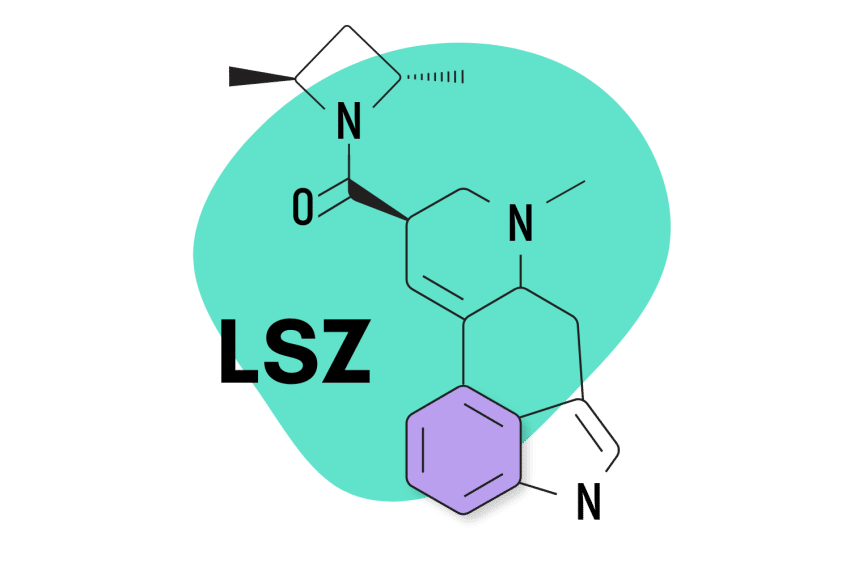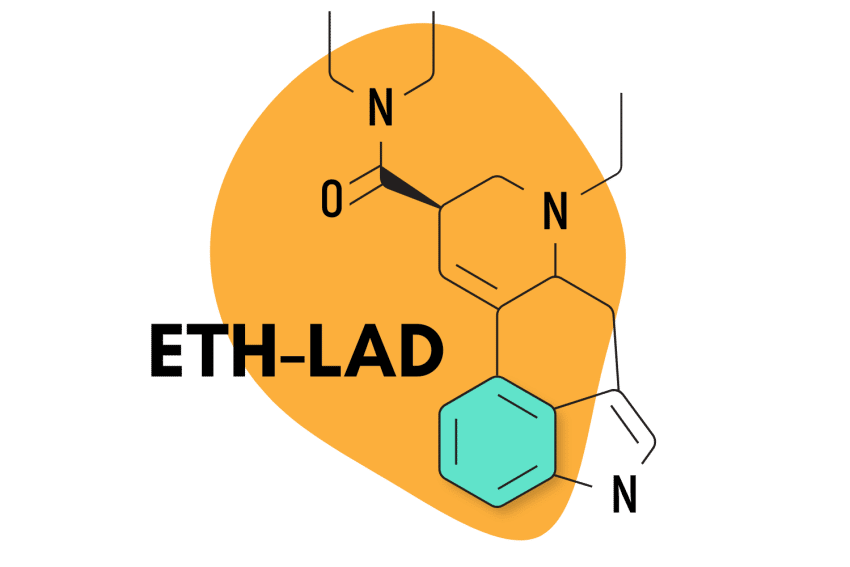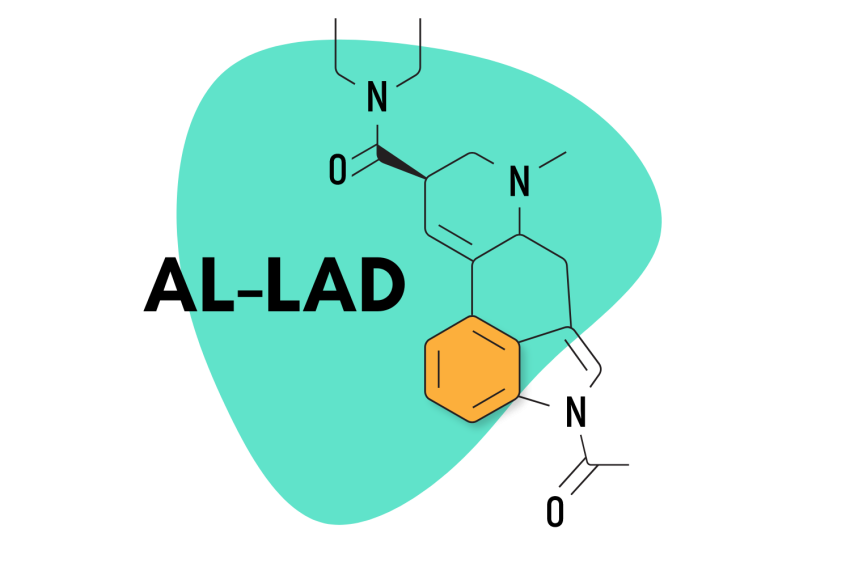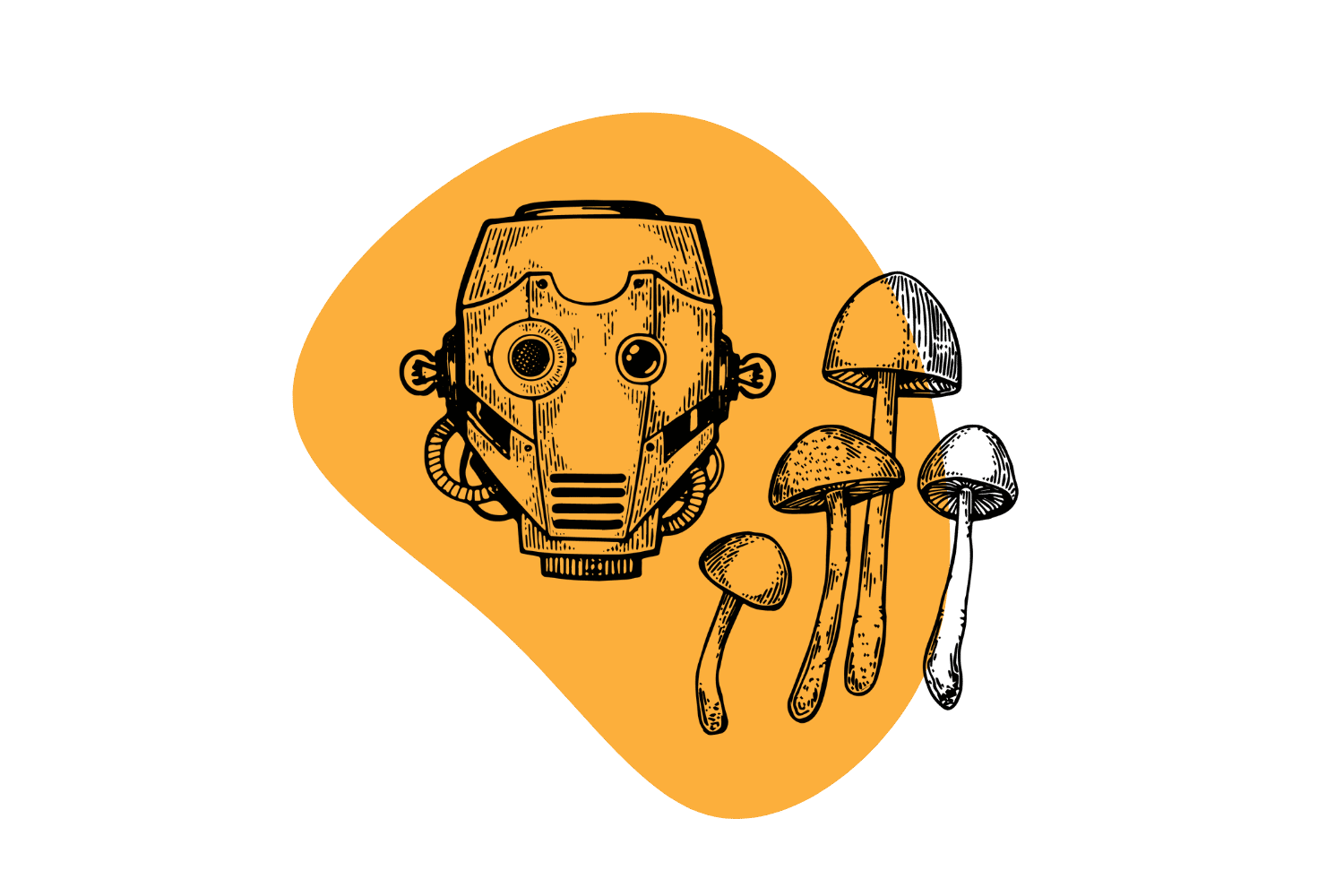Category: Tryptamines
The most common class of psychedelic substances is tryptamine psychedelics.
The most famous members of this class include DMT, psilocybin, and LSD.
These compounds interact with the serotonergic system (primarily the 5-HT2A receptor) to produce shifts in perception, ego-death, and introspection.
Alexander Shulgin outlined dozens of natural and synthetic tryptamine-based psychedelics in one of his books titled TiHKAL (Tryptamines I Have Known and Loved).
If you take LSD two days in a row, the second dose will only be about 47% as strong. This is because of a phenomenon called tolerance.
The more often you take magic mushrooms, the weaker the effects become. This is because of a concept called tolerance.
A DMT vape pen is an e-liquid vape infused with psychoactive doses of DMT. Are DMT vape pens safe? Learn everything you should know about DMT vapes.
5-Bromo-DMT (5-bromo-N,N-dimethyltryptamine) is commonly referred to as SpongeBob DMT due to its presence in several species of sea sponge.
PRO-LAD is an analog of LSD. A dose between 50 and 200 micrograms induces a similar experience. Here's what makes this forgotten psychedelic so underrated.
LSZ is an analog of LSD discovered by Dr. David Nichols. Preliminary research suggests this psychedelic compound is even stronger than LSD.
ETH-LAD is an analog of LSD. Its effects were first outlined by David Nichols, followed by the first rip report by Alexander Shulgin in his book TiHKAL.
AL-LAD is an analog of LSD that's said to have gentler effects. While it's undeniably milder, it's still a formidable psychedelic. Dosage, safety, & effects.
4-AcO-DMT — AKA synthetic shrooms — is a prodrug of a psychoactive ingredient in magic mushrooms (psilocin).
